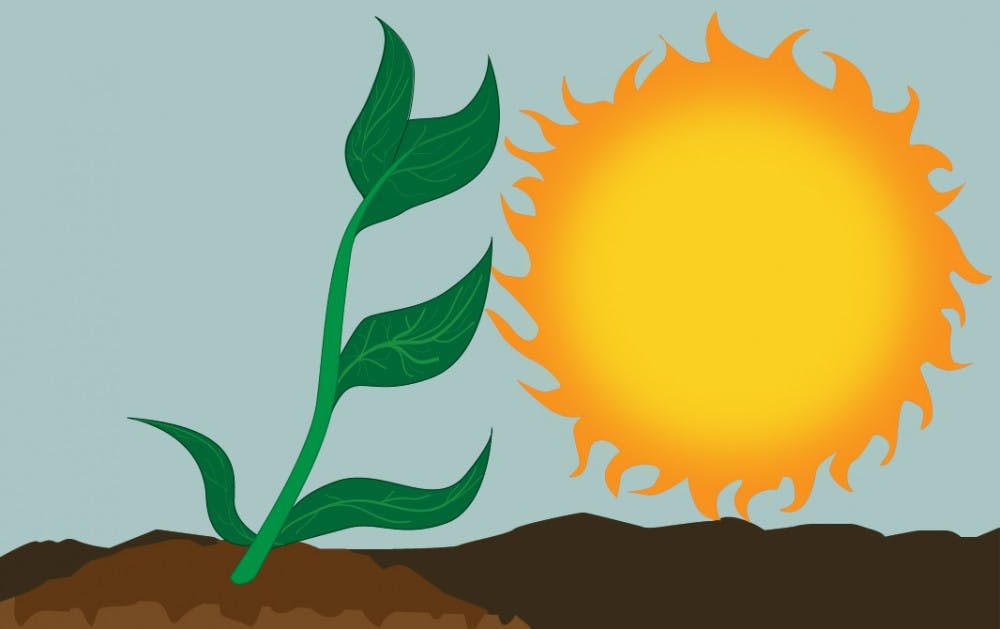A biochemistry lab on the Tempe campus seeks to speed up the processes of photosynthesis with the hope of someday being able to increase crop yield and decrease world hunger.
With growing worldwide populations, urbanization and industrial crowding, the agricultural community is struggling to provide for everyone.
Recent studies from the Food Aid Foundation show that 795 million people in the world do not have enough food to live a healthy lifestyle.
Exponential population increases have left the world 63% unusable for farming and agriculture as of 2016.
If photosynthesis can be fully understood and utilized more efficiently, it can create a greater crop yield, assist in the goal to end hunger and create a cleaner earth with abundant oxygen, according to research from an ASU lab.
Katherine Nguyen, a junior in biochemistry and an assistant in professor Rebekka Wachter's lab, said that there is opportunity for large-scale growth in the agricultural field by focusing on sunlight and photosynthesis.
Nguyen said agriculture engineers have researched and maximized almost all aspects of farming, like GMOs and fertilizers, but they have not yet maximized the power of sunlight.
"If we can more efficiently use light in photosynthesis, we can create greater crop yield, battle food shortages and, more importantly, we can speed the carbon dioxide to oxygen conversion, cleaning the atmosphere with more oxygen faster,” she said.
Photosynthesis is the process that allows plants to gain nutrients from water, sunlight and carbon dioxide. After plants consume these products, they release oxygen as a product.
The lab is currently focusing on a protein called Rubisco activase, and unlocking it can be the key to achieving its sustainability goals. But she said the process is not perfect, and Rubisco sometimes grabs the wrong thing, slowing down photosynthesis.
"We’re imaging Rubisco activase, the enzyme that helps Rubisco function, to look at its structure and function," Nguyen. "If you can understand how it functions and fits into Rubisco, then hopefully engineering can be used to settle the pitfalls and make photosynthesis function faster, so Rubisco can do its job more efficiently.”
Erin Azuma, a conservation biology and ecology sophomore, acknowledged the potential in the lab's research.
"I know photosynthesis is a very complex process, and I think it'd be revolutionary to be able to utilize it fully," Azuma said.
Isabella Breen, a doctoral student studying biochemistry and member of the lab, explained the potential of understanding photosynthesis.
"We’re still trying to figure out these complex ideas in our crops," Breen said. "Scientists have utilized solar energy technology in solar panels, but these technologies are different from how plants utilize sunlight to create energy. Once you learn about how these processes in nature occur, it can be applied to creating new technology or improving current technology."
Reach the reporter at artayl14@asu.edu and follow @abigailtay78 on Twitter.
Like The State Press on Facebook and follow @statepress on Twitter.




